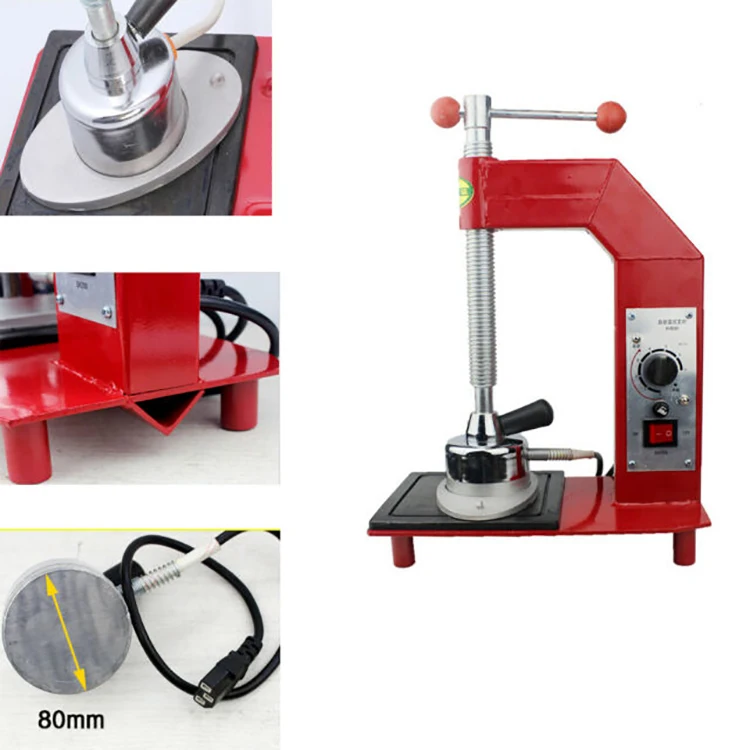Keeping tires in good shape and free from any cracks and damages is important for ensuring safety while driving and prolonging the lifespan of your tires.
So if you’re researching ways to repair damages and improve the strength of your vehicle’s tires, you may be wondering – what is tire vulcanizing? Well, here is everything I’ve found out on this topic!
Tire vulcanizing is a chemical process that hardens rubber and is frequently used to repair cracks, tears, and punctures in tires. Most local automobile service centers offer tire vulcanization services for $10-$30. However, vehicle owners can also perform the vulcanization process themselves using DIY kits that cost anywhere from $2-$15 per kit.
If you want to learn more about how tire vulcanizing works, how much does it cost to vulcanize tires, and much more, keep on reading to find out more useful facts and tips!
Charles Goodyear invented the vulcanization process in the mid-1880s while doing experiments to improve tire tubes.
Although this process received heavy criticism in the beginning, people eventually came to appreciate the benefits of vulcanization in the manufacturing and repair of tires.
The vulcanization process involves sealing and repairing punctures, cuts, or gashes in tires under extreme pressure and heat.
Vulcanization can be done in three different ways:
1. Section Repair
The section repair method is used to deal with severe damage such as cuts and tears through the cords of the tire.
In this method, both inner and outer layers of the tire are first beveled and filled with rubber patches.
After that, sulfur is applied under high pressure and temperature to permanently seal and harden the patches.
2. Spot Repair
Spot repair can only be used to repair external damage including sidewall tears, cracks, and bead damage, and is not suitable if your tire’s cords are also damaged.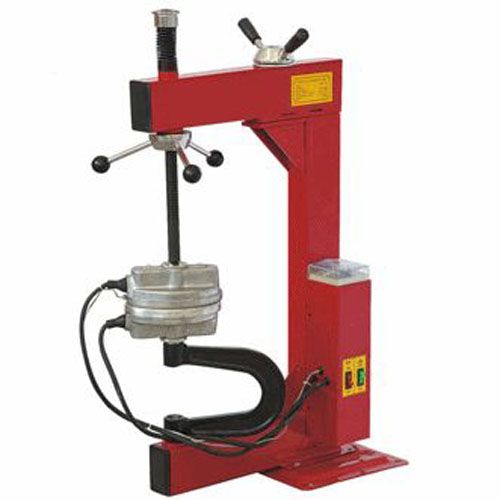
In spot repair, the surface of the damaged area is filed, evened out, and filled with a new rubber patch in the presence of sulfur or another curative under high pressure and temperature.
3. Stripping
Stripping involves adhering a thin layer of rubber to the inner surface and vulcanizing it with sulfur under high pressure and heat to form a permanent seal.
This method is primarily used to repair the inner surface of the tire, where the cords have been exposed due to extended wear and tear.
Vulcanizing fluid is a rubber-based, fast-drying liquid that is used to repair tires and tubes, which works by forming strong chemical bonds (of sulfur) with the tire patch at normal room temperature and pressure.
Afterward, once it has dried after application, the seal between the tire and patch becomes permanent and air-tight.
Here are the steps you should follow to properly apply vulcanizing fluid for your tire repair:
It should be noted that the drying time of the fluid is affected by its temperature and thickness. To compare, a thin coating will dry in five minutes, but a heavy coating can take as much as fifteen minutes to dry.
To compare, a thin coating will dry in five minutes, but a heavy coating can take as much as fifteen minutes to dry.
Although you can use both rubber cement and vulcanizing fluid to repair your tire, there is a slight difference in their composition and in how they function.
Rubber cement is made from elastic polymers (latex) and solvents (hexane or acetone), whereas vulcanizing fluid uses sulfur as the main compound for bonding with the tire’s rubber.
Additionally, rubber cement is not strong enough to achieve long-lasting results from vulcanization, whereas vulcanizing fluid makes a permanent and strong seal.
Vulcanizing a tire is an excellent way to repair and strengthen your tire since vulcanized rubber lasts a lot longer than natural rubber.
In fact, vulcanized rubber becomes ten times stronger than natural rubber due to the cross-linking of sulfur and other metallic oxides with the rubber.
Because of this, manufacturing companies often use vulcanized rubber to produce tires as well, making it quite suitable for tire repairs.
Although it is safe to vulcanize a tire, you should avoid doing so if any of the below conditions apply, since the repair will not be effective or long-lasting:
You should have your tires inspected by a professional mechanic if you are not sure whether it is safe to vulcanize a tire.
You can expect to pay between $10 to $20 for vulcanizing a damaged tire, though the cost also depends on the size of the tire and the extent of the damage.
However, keep in mind that vulcanizing a tire with a sidewall tear usually costs more (up to $30) because the sidewall is integral to the tire’s strength, rigidity, and structure.
You can get your tire vulcanized from any local automobile repair shop, and you can also visit nearby service centers of any of the following automobile chains:
You can vulcanize your tires at home using DIY Vulcanizing Patch Kits, but keep in mind that it is only suitable for very small tears or cuts.
Additionally, the process becomes more complicated if the tires are heavy-duty or commercial, or if you have no prior experience with tire repairs.
You will find the following items in most DIY Vulcanizing Patch Kits:
If you’d like to purchase a vulcanizing patch kit, you can do so from stores like Amazon, Walmart, or even your local Auto Parts store for around $2-$15 per kit.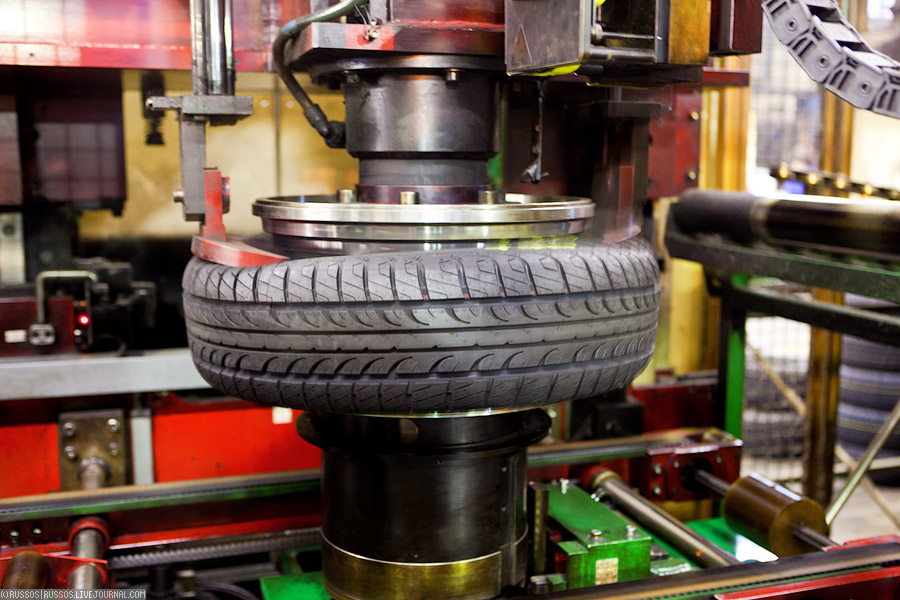
If you want to learn more, you can also check our posts on what are XL tires, what are all-season tires, and what are highway tires.
Tire vulcanizing is a chemical process used to repair cracks, tears, and punctures in tires to prolong the life of your tires.
Tire vulcanizing is a highly effective method for repairing tires, and vulcanized rubber is even used by manufacturers to produce durable and long-lasting tires for rough usage.
It’s never a good day when a tractor or combine tire goes down. Maybe a sharp piece of metal has speared it and left you completely flat. Or, maybe you’ve discovered a chipped lug, bead damage—or you’re staring at your tire’s cords through a nasty gash. If you find yourself in this situation, there’s actually good news: the tire may be repairable.
How Vulcanized Repairs Can Save You MoneyA damaged bank account is the first thing most farmers think about when they spot a damaged tire.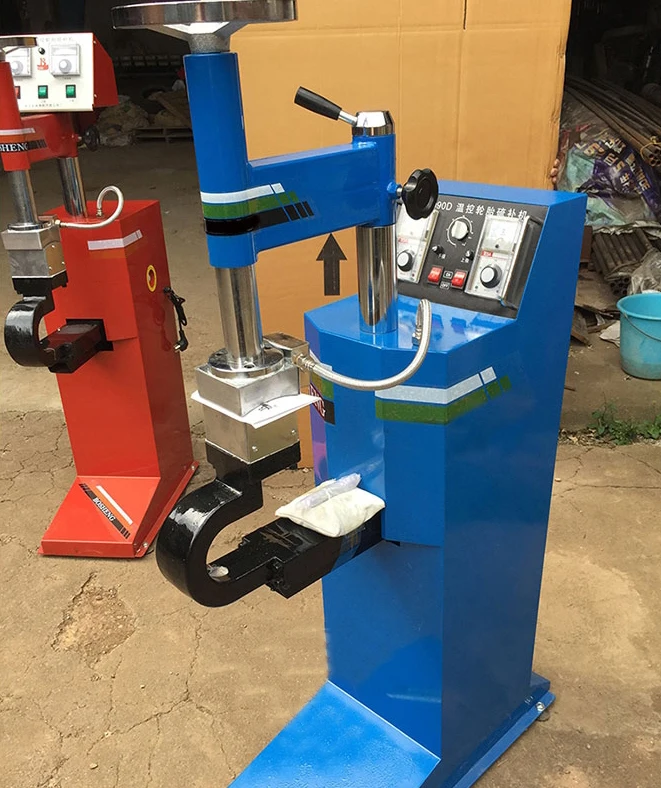 Or how the search for a decent used tire is going to waste time you don’t have. Don’t worry: NTS Tire Supply can help you with both these problems.
Or how the search for a decent used tire is going to waste time you don’t have. Don’t worry: NTS Tire Supply can help you with both these problems.
In reality, your damaged tire may still be good thanks to vulcanizing technology. Vulcanizing repairs can save your operation hundreds or thousands of dollars in tire replacement costs.
If for some reason a vulcanized repair isn’t a good fit for your tire (we cover the reasons below), we have a pretty good idea where you can find a quality used tire from a reputable seller. But first, let’s take a look at the 3 types of vulcanized repairs.
These repairs involve the most severe type of tire damage—cuts through the tire’s cords. Section repairs include sidewall, tread face, and shoulder reinforcement. To perform this repair, our vulcanizer grounds or bevels out the damaged area. The inside of the cut is then layered with new ply. Next, the cavity is filled with new rubber from the outside.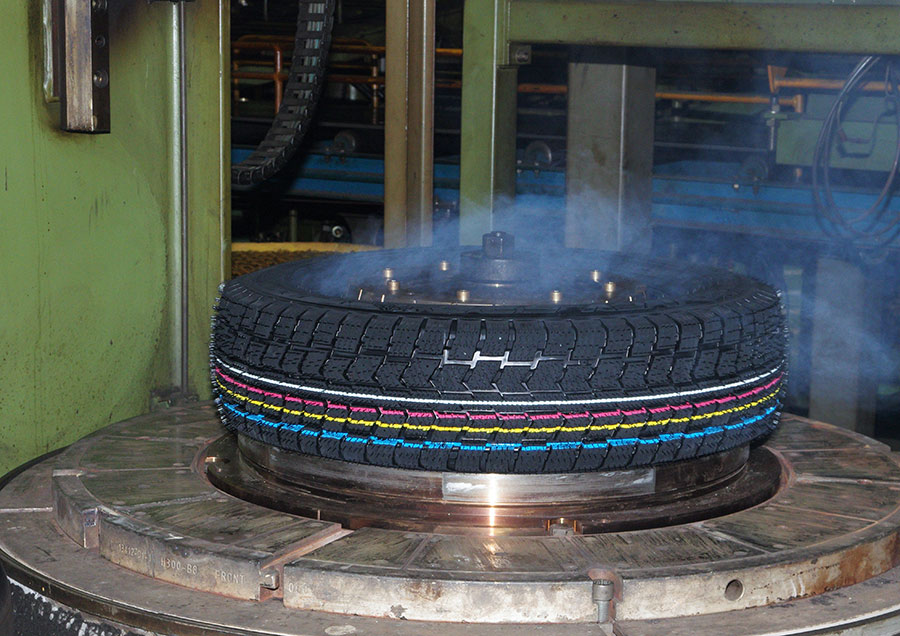 Then, a high-pressure heat cure forces the rubber tightly into the cavity to complete the repair. Our success rate for section repairs is about 95%.
Then, a high-pressure heat cure forces the rubber tightly into the cavity to complete the repair. Our success rate for section repairs is about 95%.
Spot repairs address external tire damage that does not involve the tire’s cords. Examples include sidewall cuts, chipped lugs, shoulder cracks, and bead damage. During a spot repair, our vulcanizer grounds or bevels out the damaged area and fills the outside of the cavity with new rubber. A high-pressure heat cure then forces the rubber into the casing and repairs the tire. Our success rate for spot repairs is over 99%.
Our success rate for spot repairs is over 99%.
We recommend using Orange Armor tire sealant to completely guard against future leaks.
3. StrippingUnder the demands of agricultural use, the inner lining of a tire can thin to the point where the cords become exposed. During the stripping process, our vulcanizer applies a layer of new rubber to the inside of the tire, then bonds the new rubber to the casing with a high-pressure heat cure. Our success rate for stripping repairs is nearly 100%.
You should choose your tire repair person the same way you would choose a mechanic—go with who you trust based on the company’s experience and reputation.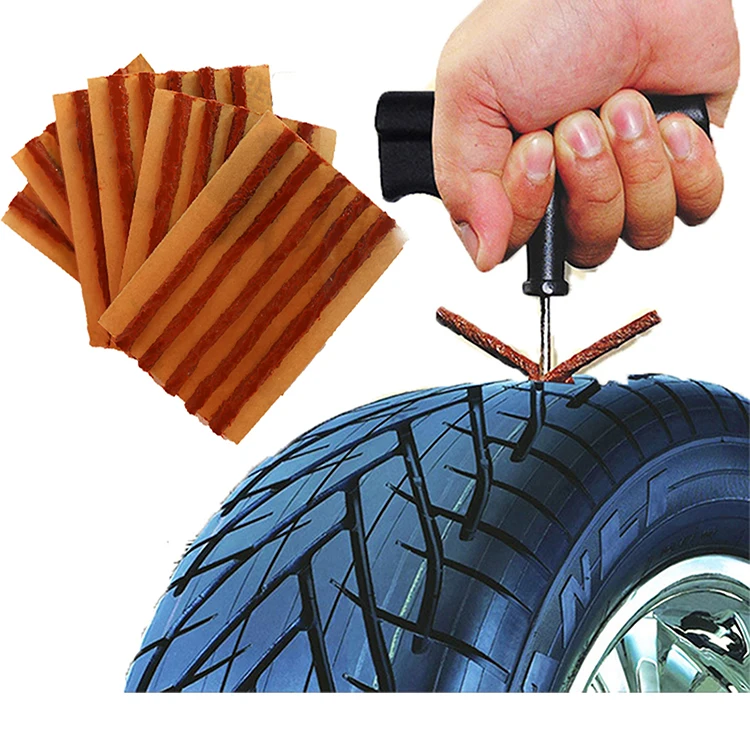 We’re fortunate to have Gary, our vulcanizer, who performs hundreds of tire repairs each year.
We’re fortunate to have Gary, our vulcanizer, who performs hundreds of tire repairs each year.
If you have a damaged tire, your first step is to contact us to see if we can fix your tire. Even though we can repair some of the nastiest-looking gashes, not every tire is repairable. A tire is unrepairable if:
Once you contact us about your repair, we’ll let you know what the next steps are. For example, we might need some pictures of the tire to determine if a fix is possible.
If we determine that vulcanizing can’t save your tire, your next step is a used tire. NTS Tire Supply has thousands of used tires in stock at any given time, so check if we can source a suitable used replacement before you look at a new one. We have everything from like-new tires with factory blemishes (that don’t affect performance) down to low-tread tires that you could mount for one more season before you invest in a whole new set.
Every used tire we sell undergoes a complete inspection, inside and out. We look for anything that could impact the performance of the tire—weathering, casing issues, odd tread wear, etc. Can you say the same for a tire you might find on Craigslist or another online retailer?
Every tire we sell (or repair) is covered by our Black Gold Warranty. Bringing in a tire for a vulcanized repair? You’re covered. NTS Tire Supply stands behind every repair job with a full 2-year warranty. In the rare case that a repair fails, we’ll redo the job free of charge or refund the full cost of the repair.
We also stand behind every tire (or track) we sell: a practice that has attracted loyal customers since the 1980s, when we first started selling used tires. If a product fails within the first 30 days after installation or 6 months after purchase (whichever comes first), NTS Tire Supply will offer free replacement, repair, or the full purchase price back including labor.
Read More: NTS Tire Supply covers every used tire we sell with our Black Gold Warranty.
Have a damaged tire? Contact us today and we’ll discuss your repair options. And if you need a used tire or want to upgrade the performance of a machine on your farm with a set of new rubber, our tire experts will work to find the best options for your operation. We’re here to help drive your farm forward.
NTS Tire Supply Team
Repair
Vulcanization is a complex technological process that transforms plastic rubber into rubber. At the same time, the shape of the product is fixed, it becomes more elastic, durable and solid. Rubber after vulcanization is difficult to break, its performance is improved, and endurance reaches incredible parameters. Chemists will call the process of vulcanization "cross-linking" of rubber macromolecules into a vulcanization network by transverse rare chemical bonds. For this, a special chemical agent is used.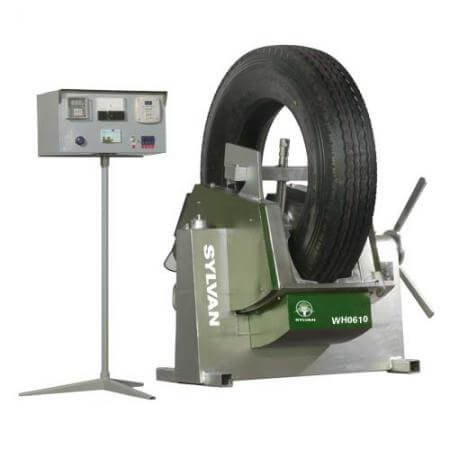
The discovery of vulcanization, oddly enough, is not connected with intense research work, but with the banal negligence of work. An employee at the Massachusetts Rubber Factory accidentally dropped a lump of rubber mixed with sulfur onto a hot stove. The rubber was charred but not melted. It happened in 1839, the worker's name was Charles Goodyear, and therefore it is from that time that the development of vulcanization is counted. In 1844, the first patent appeared, according to which rubber was to be exposed to aqua regia and copper nitrite. The process got its name from the ancient Roman god of fire, Vulcan.
The inventor found his own vulcanization mode, noting that after it the rubber becomes resistant to temperature effects. To do this, lead and sulfur are involved in the chemical process, which are heated to the desired temperature along with rubber. Thus, elastic rubber is obtained, which is immune to the influence of sunlight and cold.
In the century before last, only sulfur was used for vulcanization, but over time, many other substances were added to it, for example, calcium sulfide, alkali sulfide, arsenic sulfide, lead, antimony, zinc salts, sulfur chloride and many other substances with a high sulfur content . Vulcanization was the impetus for the industrial production of tires. The last solution to the dough is associated with the activities of the Englishman Robert Thomson, who invented "air" wheels in 1846, and the Irishman John Dunlop, who pulled a rubber tube on a bicycle wheel.
Tire vulcanization is one of the tools for repairing damaged rubber. As a rule, special plasters intended for cold and hot vulcanization are used. In the process, the chamber repair fluid interacts with the active layer of the patch patch. To process the surface of materials and places of defects, special cement BL is used. Adhesives are used to fix and connect structural elements and parts.
• Without heat treatment, two rubber components are bonded together in a cold vulcanization process. In this case, a patch with an adhesive layer is attached inside the tire. This process proceeds quite slowly, and therefore, at an average ambient temperature of 20 C, the tire should stand for a day after installing the patch. If it is colder outside, it will take two days to complete the process. For the process to go right, one should not deviate from the technology in anything. To consolidate the effect, it is worth using additional means for rubber after the end of vulcanization;
• If high temperatures are used to bond materials, this is hot vulcanization. For this process, the so-called "raw rubber" is used - a plastic mixture that restores the places of rubber damage. The vulcanization service is available at many service centers.
In order for tires to last long enough and not need vulcanization, they should be purchased from trusted virtual marketplaces, such as Rezina. cc. There are experienced professionals who can answer any questions. The advantages of an online store are a reasonable pricing policy and prompt delivery without an advance fee.
cc. There are experienced professionals who can answer any questions. The advantages of an online store are a reasonable pricing policy and prompt delivery without an advance fee.
Tire shops use "vulcanization" technology to repair damaged tires. This is the most effective method to quickly and reliably retread a tire while preserving the properties of the rubber. The technology itself involves the production of rubber from rubber. In this way it is possible to repair a wheel with a puncture, cut, etc.
Contents
Vulcanization, from a chemical point of view, is a process in which rubber macromolecules are “crosslinked” into a three-dimensional spatial network by rare cross-links. It can also be said that this is a technological process for turning plastic rubber into rubber. The ability to quickly and efficiently recover is applicable to most products in the rubber industry. But if inflatable boats, swimming pools and swim rings need repair due to disuse and improper storage, then car tires are repaired much more often. This is due to the large loads falling on them.
Tire vulcanization is a modern process that allows you to dramatically reduce the cost of servicing car wheels in case of damage.
Gone are the days when damaged tires were thrown to the side of the road en masse due to the impossibility of repair. The growth in the number of automobiles has led to a corresponding growth in the auto repair industry, including wheel repair. It is more economical to vulcanize a wheel than to buy a new one.
Tire vulcanization is a modern process that allows you to dramatically reduce the cost of servicing car wheels in case of damageAt the moment there are 2 variants of technology:
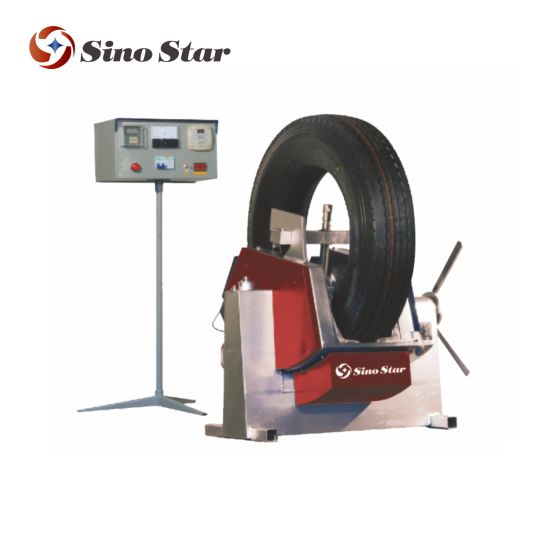
The hot vulcanization process of tires is based on heat treatment of the damaged area with the addition of rubber (“raw rubber”). Under the influence of high temperature, the rubber components are fastened together, creating a plastic monolithic layer.
Penetrating into the cut, heat-treated rubber completely fills the space, preventing dirt and moisture from penetrating into the tire.
Briefly, the process of hot vulcanization is as follows:
Advantages of hot curing:
Nowadays, this method is not difficult to use, since you can buy a repair kit in every auto or bike parts store. The complete set of such a set may differ, but each has patches and special glue.
The repair procedure in this case is similar to the hot method. You also need to treat the damaged surface with an abrasive, remove rubber dust and degrease. After drying, apply glue to the camera and stick the patch. In this case, it is not the duration of the pressing that matters, but its strength. Therefore, it will not be enough just to press down with a stone, more effort is needed.
DIY rubber cold vulcanization is a fairly simple process that can be done anywhereDIY rubber cold vulcanization is a fairly simple process that can be performed anywhere if you have a special kit. However, do-it-yourself raw rubber is not done at home. Such work requires special equipment.
Key benefits of cold vulcanizing tires:
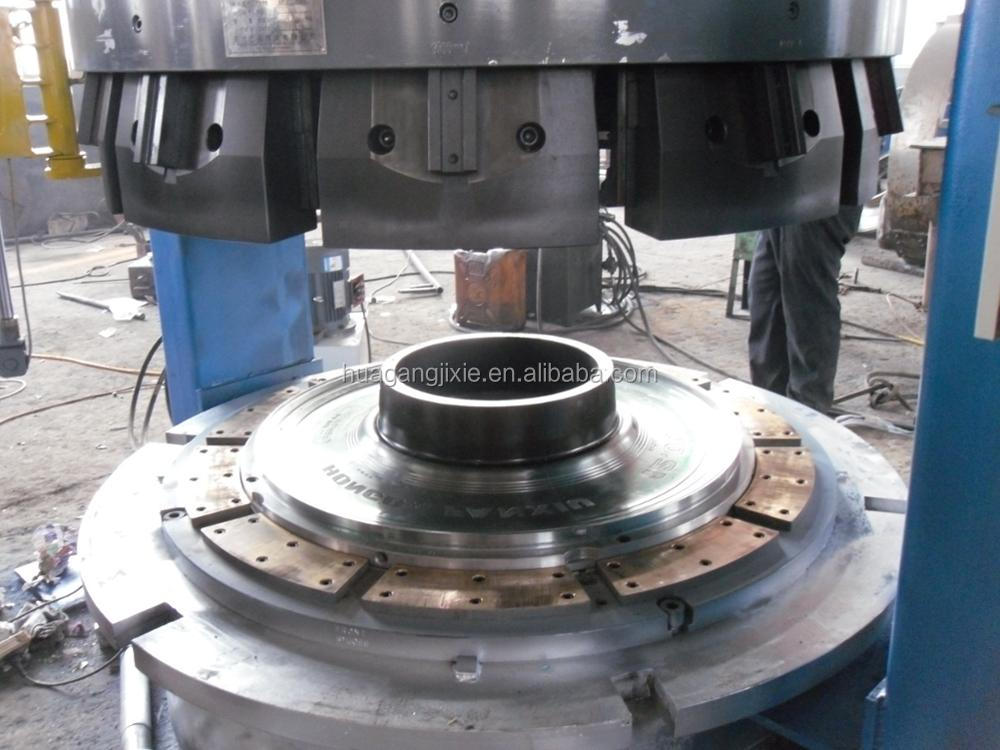 Low cost of vulcanization (even in the conditions of a tire shop).
Low cost of vulcanization (even in the conditions of a tire shop). Any new tire is definitely better than a refurbished one. Even the smallest through cut violates the integrity of the inner cord layer, which leads to an inevitable loss of stiffness.
Hot vulcanizing tire side cut repair (video of the process can be found online) brings the wheel closer to its natural strength by only 90%. This is quite enough for the daily operation of repaired tires for 1-2 seasons.
Cold vulcanizing with professional adhesives and in a tire shop also gives reliable results. However, if the cord is severely damaged, this method requires the wheel to be taken apart and an additional patch placed on the inside.
The most common consequence of a tire repair is a bulge at the repair site. It also requires urgent removal. If blisters reappear on the side of the tire, it is recommended to replace the wheel.
The discovery of vulcanization, oddly enough, is not connected with intense research work, but with the banal negligence of work. An employee at the Massachusetts Rubber Factory accidentally dropped a lump of rubber mixed with sulfur onto a hot stove. The rubber was charred but not melted. It happened in 1839, the worker's name was Charles Goodyear, and therefore it is from that time that the development of vulcanization is counted. In 1844, the first patent appeared, according to which rubber was to be exposed to aqua regia and copper nitrite. The process got its name from the ancient Roman god of fire, Vulcan.
The inventor found his own mode of vulcanization, noting that after it the rubber becomes resistant to temperature effects. To do this, lead and sulfur are involved in the chemical process, which are heated to the desired temperature along with rubber. Thus, elastic rubber is obtained, which is immune to the influence of sunlight and cold.
In the century before last, only sulfur was used for vulcanization, but over time, many other substances were added to it, for example, calcium sulfide, alkali sulfide, arsenic sulfide, lead, antimony, zinc salts, sulfur chloride and many other substances with a high sulfur content .